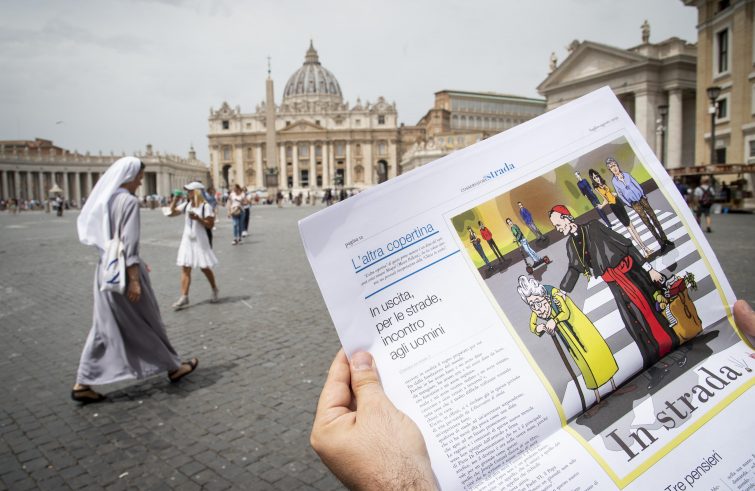
The first document approved by the Fathers of the Second Vatican Council was the Decree on the Instruments of Social Communications Inter Mirifica, which dealt specifically with the mass media. The drafting process of Inter Mirifica was not an easy one. The text was initially conceived as a constitution, a document reserved for matters of great importance. In the end, however, it was adopted as a decree and received more votes against than any other Council document. Specifically, the text received 1,960 votes in favour, 164 against and 7 abstentions. After several extended drafts, the decree was adopted in an abridged version that provided a broad outline of the theological understanding of the mass media. Nevertheless, Inter Mirifica became a touchstone for all subsequent Church documents on media and social communication and marked a starting point for Church reflection on mass media communication.
In fact, for the first time the expression “media of social communication” (Inter mirifica, n. 3) appeared in Church documents in connection with the mass media, replacing earlier rather generic expressions such as “the most powerful means of publicity” (Divini illius Magistri, Pius XI, 1929), “means of influencing the masses” (Vigilanti cura, Pius XI, 1936), “technical inventions” (Miranda prorsus, Pius XII, 1957) or “remarkable inventions” (Boni Pastoris, John XXIII, 1959).
The Decree on the Instruments of Social Communications consists of two chapters: the first is devoted to the proper use of the media, while the second focuses on the media as a means of apostolate. Indeed, the approach to the mass media was influenced by the theological developments and debates of the Second Vatican Council on the mission of the Church in the world and the theology of the laity. Inter Mirifica starts from the premise that the mission of the Church is first and foremost the proclamation of the Gospel for the salvation of humanity, adding that this task requires “the media of social communication” (n. 18). Regarding the role of the laity, the decree states: “the laity especially must strive to instill a human and Christian spirit into these media, so that they may fully measure up to the great expectations of mankind and to God’s design.” (n. 3).
The “absolute primacy of the objective moral order” (n. 6) is made explicit by Inter Mirifica as a general principle in the context of social communications. In this regard, the use of the mass media by the general public and communication professionals requires that they know and live according to the overarching moral principles inherent in human dignity. This aspect underlies all other moral principles of communication and can be found in almost all successive Church documents on the media, such as the Pastoral Instruction Aetatis Novae (1992).
The decree also encouraged the creation of national Press, Cinema, Radio & Television departments within established Church structures. “It will be the special task of these offices to see that the consciences of the faithful are properly instructed with regard to these media. Likewise they should foster and guide whatever is done by Catholics in these areas.” (n. 21). Subsequent experience has shown that this wish has been fulfilled in many places. Dioceses, Bishops’ Conferences, religious congregations, movements, etc. have set up departments for social communications.
Inter Mirifica also initiated the annual celebration of the World Day of Social Communications, which has been celebrated throughout the world since its inception. A total of 57 World Days of Social Communications so far, each accompanied by a Message from the Holy Father, have addressed all the relevant themes in the field of social communications, ranging from the family to young people, from social networks to artificial intelligence (as the Message for the 58th World Day of Social Communications for the year 2024).
Inter Mirifica clearly affirmed the right of the Catholic Church to have its own media. However, it did not emphasise the free initiative and obligation of Christians to promote the values of the Gospel through media not directly owned by the Church. However, as noted above, Inter Mirifica marked the beginning of an increasing focus on the mass media in the official documents of the Holy See and in the public statements of the Popes.
(*) Dean of the Faculty for Institutional Communications of the Pontifical University of the Holy Cross












